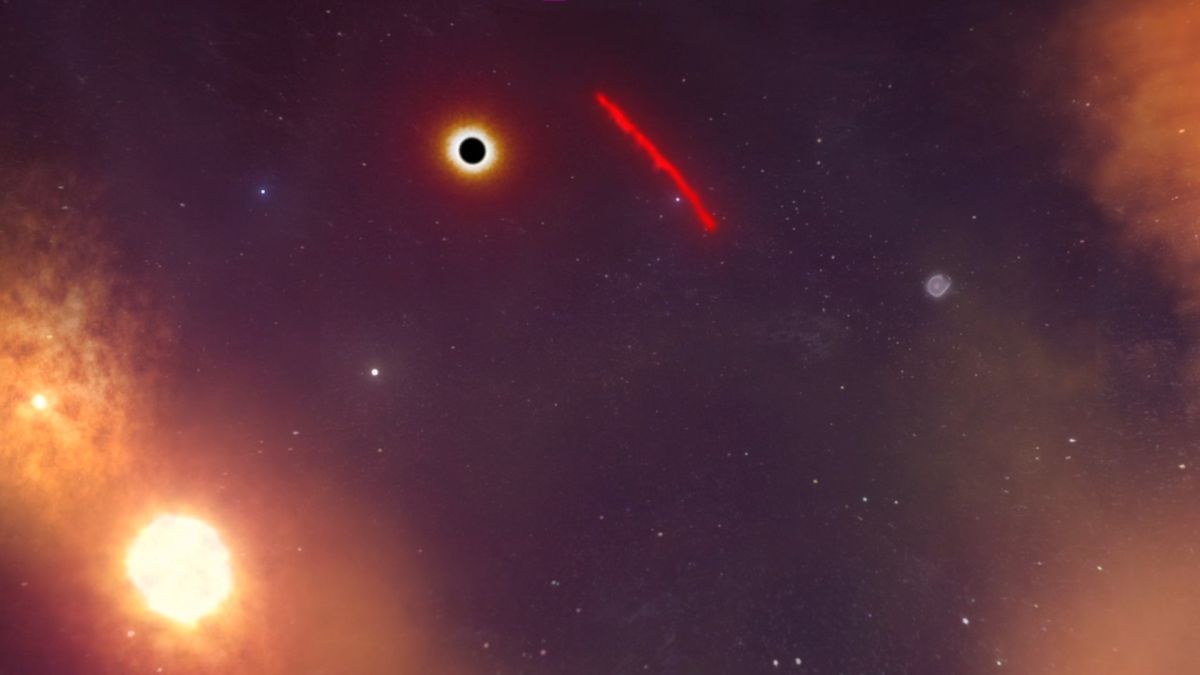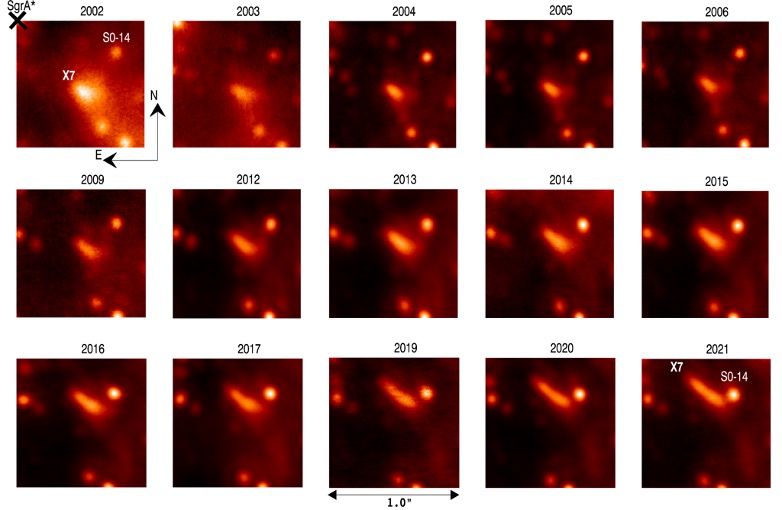For more than 20 years, scientists have been observing how the supermassive black hole in the center of the Milky Way is slowly tearing and stretching the dust cloud X7. It is known that in 2036 this object will be destroyed, but it is still unclear where it comes from.

Dust Cloud X7
Scientists studying the supermassive black hole Sagittarius A*, which is located in the center of the Milky Way, told about the dust cloud X7, which they had been observing for the past 20 years. This object, along with a bunch of others, orbits a space monster and experiences amazing transformations at the same time.
The mass of X7 is approximately 50 Earth masses. By cosmic standards, this is a fairly small object, but it still regularly gets on the images taken by the telescope of the Keck Observatory in Hawaii. Thanks to this, scientists were able to trace its evolution.
Twenty years ago, X7 looked like an ordinary slightly elongated cloud. But since then, under the influence of gravity from Sagittarius A*, it has stretched into a thin string, the length of 3000 distances from the Earth to the Sun.

Future and Past of X7
Now X7 is orbiting the black hole at a speed of up to 490 km/s. But, despite this, it takes 170 thousand years to make one orbit. However, it is rapidly approaching Sagittarius A* and in 2036 it will reach the minimum possible distance.
At that moment, the tidal forces will tear it apart and after a while it will completely dissipate. The material will be absorbed by the black hole. And since it will warm up at the same time, astronomers expect bright fireworks in the form of flares in different ranges.
But the past of X7 remains unknown. Scientists suggest that it may have formed as a result of the merger of two stars. Two luminaries, which were also strongly influenced by the gravity of the black hole, collided and threw off their shell, part of which formed a dust cloud.
The study is also interesting because X7 is not the only such “thread” circling around Sagittarius A*. They are called G-objects. Astronomers plan to observe the cloud until its death in order to understand what fate awaits others.
According to www.space.com
Follow us on Twitter to get the most interesting space news in time
https://twitter.com/ust_magazine

